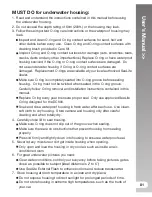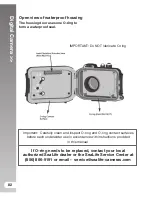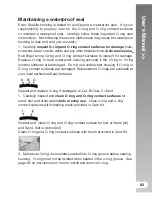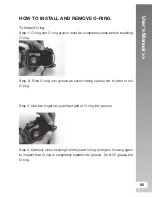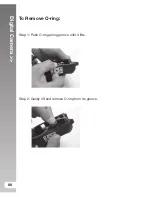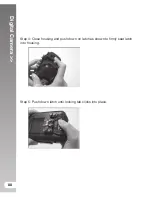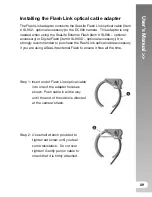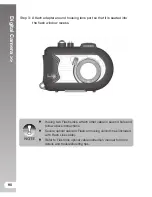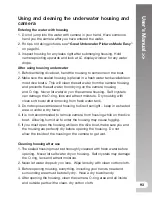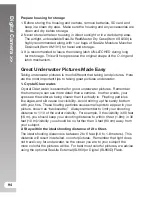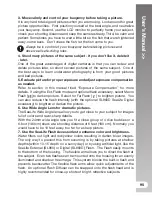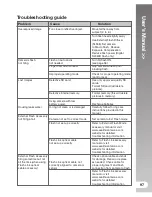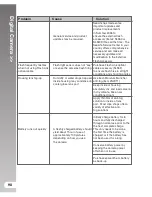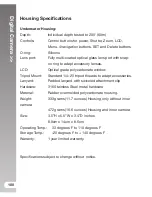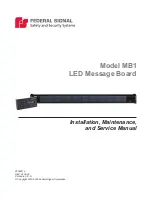
User’
s Manual >>
95
3. Move calmly and control your buoyancy before taking a picture.
It is very hard to take good pictures when you are moving. Look around for great
picture opportunities. First position yourself at the best angle, and neutralize
your buoyancy. Second, use the LCD monitor to perfectly frame your subject,
check your shooting distance and keep the camera steady. Third, be calm and
patient: Sometimes you have to wait a little bit so the fish that were frightened
away, come back. Don’t chase the fish, let the fish come to you.
Always be in control of your buoyancy before taking pictures and
observe all safe-diving rules.
4. Shoot many pictures of the same subject - If you don’t like it, delete it
- later.
One of the great advantages of digital cameras is that you can review and
delete pictures later, so shoot several pictures of the same subject. One of
the best ways to learn underwater photography is from your good pictures
and bad pictures.
5. Evaluate picture for proper exposure and adjust exposure compensation
as needed.
Refer to section in this manual titled “Exposure Compensation” for more
details. If using the Ext. Flash mode and optional flash accessory, select Macro
Flash [ ] to darken picture. Select for Far Flash [
F
] to brighten picture. You
can also reduce the flash intensity (with the optional SL960D SeaLife Digital
accessory) to brighten or darken the picture.
6. Use Wide Angle Lens for dramatic pictures.
The SeaLife Wide Angle lens allow you to get close to your subject for images
full of colors and razor-sharp details.
With the 24mm wide-angle lens you fit a close group of 4 dive buddies or a
6-foot (180 cm) shark at a shooting distance of 6 feet (180 cm). Normally, you
would have to be 10 feet away, too far for a sharp picture.
7. Use the SeaLife Flash Accessories to enhance color and brightness.
Water filters out light and red/yellow colors resulting in darker, bluer images.
The only way to prevent this from occurring is by taking pictures at shallow
depths (within 10-15’ depth on a sunny day) or by using artificial light, like the
SeaLife External (SL960) or Digital (SL960D) Flash. The Flash easily mounts
to the bottom of the housing. The flexible arm allows you to direct the flash at
the subject. Even two flashes can be mounted onto the housing for an evenly
illuminated and shadow-free image. This system blocks the built-in flash and
prevents backscatter. The flexible flash arms allow quick adjustments of the
flash. An optional Flash Diffuser can be snapped onto the flash head and is
highly recommended for close-up shots of bright, reflective subjects.

